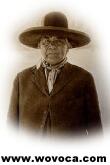|
||||||||||||||||||
Press CTRL+D to bookmark this page! |
||||||||||||||||||
 |
||||||||||||||||||
| Click here for
EarthMotherCrying Wallpaper |
||||||||||||||||||
The African Dogon Tribe and the Sirius B Prophecy |
||||||||||||||||||
|
||||||||||||||||||
|
||||||||||||||||||
|
|
||||||||||||||||||
|
||||||||||||||||||
|
||||||||||||||||||
|
||||||||||||||||||
|
||||||||||||||||||
The Sirius Mystery The Dogon, a tribe in West Africa, are believed to be of Egyptian descent. After living in Libya for a time, they settled in Mali, West Africa, bringing with them astronomy legends dating from before 3200 BCE. In the late 1940s, four of their priests told two French anthropologists of a secret Dogon myths about the star Sirius (8.6 light years from the earth). The priests said that Sirius had a companion star that was invisible to the human eye. They also stated that the star moved in a 50-year elliptical orbit around Sirius, that it was small and incredibly heavy, and that it rotated on its axis. All these things happen to be true. But what makes this so remarkable is that the companion star of Sirius, called Sirius B, was first photographed in 1970. While people began to suspect its existence around 1844, it was not seen through a telescope until 1862 -- and even then its great density was not known or understood until the early decades of the twentieth century. The Dogon beliefs, on the other hand, were supposedly thousands of years old. The Dogon name for Sirius B (Po Tolo) consists of the word for star (tolo) and the name of the smallest seed known to them (po). By this name they describe the star's smallness -- it is, they say, "the smallest thing there is." They also claim that it is "the heaviest star" and white. The Dogon thus attribute to Sirius B its three principal properties as a white dwarf: small, heavy, white. Even if these people had somehow seen Western astronomy textbooks, they could not have known about Sirius B. Also puzzling was their knowledge of the rotations and orbits of planets in our solar system and of the four major moons of Jupiter and the rings of Saturn. How did they learn all this? Dogon folklore says that this knowledge came from unearthly sources. The Dogon tell the legend of the Nommos, awful-looking beings who arrived in a vessel along with fire and thunder. The Nommos, who could live on land but dwelled mostly in the sea, were part fish, like merfolk (mermaids and mermen). Similar creatures have been noted in other ancient civilizations -- Babylonia’s Oannes, Acadia’s Ea, Sumer’s Enki, and Egypt’s goddess Isis. It was from the Nommos that the Dogon claimed their knowledge of the heavens. The Dogon also claimed that a third star (Emme Ya) existed in the Sirius system. Larger and lighter than Sirius B, this star revolved around Sirius as well. And around it orbited a planet from which the Nommos came. Although Robert K.G. Temple’s book The Sirius Mystery was taken more seriously than many other ancient-astronaut writings when it was first published in 1977, it met with some bad luck; it was criticized by two important science figures, writer Ian Ridpath and celebrity-astronomer Carl Sagan. From that point on, many felt that it did not get the kind of consideration that its well-laid case deserved. Ridpath and Sagan had their own simple explanation for the Sirius mystery: the Dogon got their supposedly ancient knowledge of the heavens from modern informants. They asserted that Westerners had probably discussed astronomy with Dogon priests, who quickly added this new information to the older folklore. French anthropologist Germaine Dieterlen, who had lived among the Dogon for most of her life and whose writings on their astronomy myths had caught Temple’s attention in the first place, called this idea "absurd" when asked about it by a reporter for BBC-TV’s Horizon program. Then she displayed for the show’s audience a Dogon object crafted 400 years earlier, which clearly indicated Sirius and its companion stars. Despite the criticism, Temple continued to defend his position. He pointed out that some of the information, like that concerning the superweight of Sirius B, was only a few years old when anthropologists first collected it from the Dogon in 1931. Temple wondered why Western astronomers would rush to far-off Mali to share their new astronomical knowledge with Dogon priests. And how, in two or three years’ time, could this information then filter down through the entire Dogon and surrounding cultures of over two million people and show up in hundreds of thousands of objects, woven blankets, carved statues, and more? These reasonable questions brought no response from Ridpath, Sagan, and other Temple critics. Whenever a writer or an article or book would report that the Dogon’s Sirius beliefs came from modern informants, Temple would respond with a point-by-point account that argued otherwise. But his comments were simply ignored. Now there are other factors that cast serious doubt on the Dogon’s story. So far no third star has been detected in the Sirius system. And for scientists who search for evidence of intelligent life in the universe, Sirius has never been on their list of places to look. Still, Temple raised serious questions about the Dogon’s Sirius beliefs. Two decades after the publication of The Sirius Mystery, the book was been nearly forgotten (it has since been reprinted). Yet the puzzle of the Dogon’s remarkable astronomical knowledge remains. Source: Encyclopedia of Strange and Unexplained Phenomena by Jerome Clark
Further Reading
The
Sirius Mystery
The
Sirius Mystery: New Scientific Evidence for
Heaven's
Mirror:
Architects
of the Universe:
Broca's
Brain: Reflections on the
|
||||||||||||||||||
|
||||||||||||||||||
Shapeshift to WOVOCA! to view this site's main page |
||||||||||||||||||
|
||||||||||||||||||
|
||||||||||||||||||
|
||||||||||||||||||
|
||||||||||||||||||
|
||||||||||||||||||










![[Image]](pict41.jpg)
![[Image]](pict43.jpg)